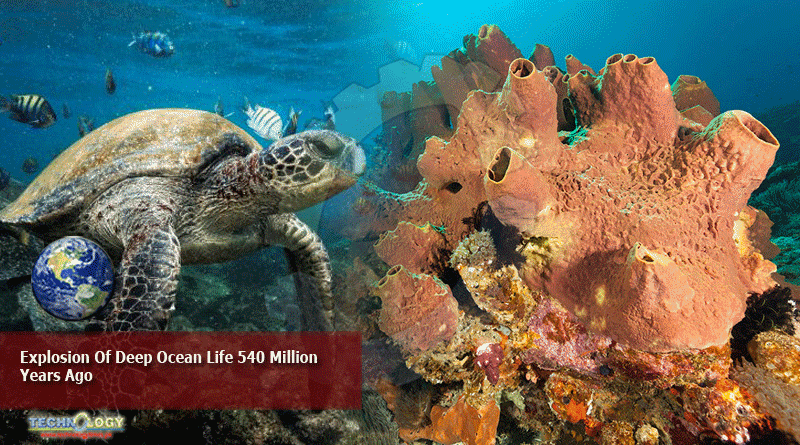In a new study from the University of Saskatchewan, researchers describe an explosion of deep ocean life 540 million years ago.

Numerous worm-like sea creatures appeared that tunneled complex holes and structures into mud and sand that had previously been barren.
This boom in biodiversity was one of two such events that took place across a 100-million-year timespan. Insight into ancient ocean life gives scientists a better understanding of changes that are taking place in the deep sea today.
“We can see from the trace fossils – tracks, trails, borings, and burrows animals left behind – that this particular environment of the ocean floor, the offshore, served as a ‘crucible’ for life,” said study lead author Luis Buatois. “Over the next millions of years, life expanded from this area outwards into deeper waters and inwards into shallower waters.”
Over the course of two decades, Buatois and his team examined hundreds of rock formations in locations across every continent.
“Until now, these two events, the Cambrian Explosion and the Great Ordovician Biodiversification Event, have been understood mostly through the study of body fossils – the shells, carapaces and the bones of ancient sea creatures,” said Buatois.
“Now we can confidently say that these events are also reflected in the trace fossil record which reveals the work of those soft-bodied creatures whose fleshy tissues rot very quickly and so are only very rarely preserved.”
The study has produced the first evidence of ancient animals actively engineering their ecosystem through the construction of burrows on the ocean floor.
“Never underestimate what animals are capable of doing,” said study co-author Gabriela Mángano. “They can modify their physical and chemical environment, excluding other animals or allowing them to flourish by creating new resources. And they were definitely doing all these things in these ancient seas.”
The innovative behavior of prehistoric sea creatures seems to have set the stage for greater diversity in marine life. The team identified a 20-million-year time frame during the Cambrian Explosion when there was greater diversification in trace fossils but not in animal body fossils. This indicates that engineered changes helped the animals which emerged later to diversify even more.
The study also revealed that, just like oceans today, the Cambrian ocean had certain areas that were full of life and others that lacked the oxygen needed to support life.
“The fact that trace fossil distribution shows that there were spots where life flourished adjacent to others devoid of animal activity all through the early Cambrian period is a strong argument in favor of the idea that zones with enough oxygen to sustain a diversity of animals co-existed with oxygen-depleted waters in deeper areas,” said Mángano.
“It’s a situation similar to what happens in modern oceans with oxygen minimum zones in the outer part of the continental shelf and the upper part of the continental slope, but oxygenated ones in shallower water.”
The research could ultimately help predict upcoming changes in marine life.
“Understanding changes that took place early in the history of our planet may help us to face present challenges in modern oceans, particularly with respect to oxygen changes,” said Buatois.
This news was originally published at earth.com
